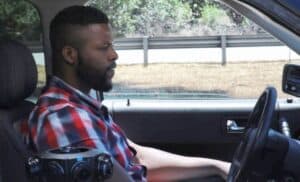We’re soaking up all the VR that the Sundance Film Festival has to offer this week and missed the recent Lumiere™ Awards. But it’s worth noting the recognition for Van Jones and Elijah Allan-Blitz’s project, The Messy Truth VR Experience. It’s interesting to see a TV host (from CNN of all places) move into the VR realm. And the work is another vote for the use of VR for social impact and to foster empathy.
The Lumiere™ Awards are given by the Advanced Imaging Society, an organization founded by immersive media heavyweights (or not, depending on future developments). It includes The Walt Disney Studios Motion Pictures, DreamWorks Animation, Sony, Paramount, IMAX, Dolby, Panasonic, MasterImage and others.
With a mission “. . . To advance the creative arts and sciences of stereoscopic 3D,” it’s no surprise that virtual reality has a starring role.
We’ll come back to the many incredible VR experiences at Sundance (you can read our preview here) once we’ve had a chance to digest everything. But let’s look at the vital work by Van Jones and Allan-Blitz to use VR for social impact. It comes with some significant star-power in Winston Duke, who played M’Baku in last year’s Black Panther (Duke is also a producer for the project). And it’s more than a 360° video, leveraging Leap Motion’s technology to put you into the experience.
The Messy Truth VR Experience
If there are any traditions in the short lifespan of the modern VR revolution, it would be in social-documentary work. And The Messy Truth VR Experience continues in that direction. It puts you in the shoes of a young African-American boy as he and his father are pulled over by the police. Undertaken with research from Time Magazine, it’s based on a true story.
The project follows closely on the heels of another race-related VR experience, I am a Man. That project brought you into the lives of Civil Rights marchers on the tragic last days of Dr. King’s life.
Van Jones says of his own experience,
Sometimes it seems nearly impossible to truly understand what a person of a different race, gender or worldview is going through. But a virtual reality experience can give life-changing insight. VR has the potential to be the world’s most powerful tool for generating empathy and understanding. It’s time to start using this new technology to bring us together across old divides.
VR and Empathy
Can The Messy Truth VR Experience foster empathy? The empathy aspect in VR is a question of increasing debate. Jeremy Bailenson has been studying the issue at Stanford with promising results. Students who go through a virtual experience of homelessness seem to have a measurable change their behavior.
Others argue the opposite. Erick Ramirez, an assistant professor in philosophy at Santa Clara University in California, claims that it’s dangerous to see VR supporting empathy. In a recent article in Aeon, he says,
While VR might help us to cultivate sympathy, it fails to generate true empathy. Although they are often confused with one another, these capacities are distinct. I distinguish between them like this: empathy relates to the cognitive and emotional abilities that help us feel with another. Empathy is what we use when we engage in perspective-taking. Sympathy, meanwhile, involves the capacities that help us feel for another. It doesn’t include imagining what it’s like to be someone else.
Measuring someone’s sympathy for another versus a deeper level of perspective-taking has no easy solution. We don’t have long-term studies of the impact of VR on human behavior which might provide some evidence of VR generating more than sympathetic feelings.
Many of the VR creators at Sundance this year have moved away from the empathy issue. They are focusing on our perception of ourselves and the world instead of how we relate to others. That might be a temporary shift in focus. But it could also reflect the challenges in resolving the issue. And the fact that technology is raising new issues in the use of live performers and AI in virtual environments. What we’ve seen this week at Sundance will deeply complicate the empathy question since it seems to call into the question the possibility of truth in virtual reality.
VR as a tool for social impact
To Van Jones’ credit, he talks about the potential of VR to create empathy and doesn’t see it as a given. He plans to follow-up The Messy Truth VR Experience with projects on coal miners, the opioid epidemic and other issues. These projects are about turning VR into a tool for social good.
Whether virtual reality can indeed foster empathy remains an open question. But perhaps, as Van Jones argues, it can be used as a tool to bridge cultural divides. In a world where our media seems to mirror a deepening polarization of our society, that would be critically important.
Emory Craig is a writer, speaker, and consultant specializing in virtual reality (VR) and generative AI. With a rich background in art, new media, and higher education, he is a sought-after speaker at international conferences. Emory shares unique insights on innovation and collaborates with universities, nonprofits, businesses, and international organizations to develop transformative initiatives in XR, GenAI, and digital ethics. Passionate about harnessing the potential of cutting-edge technologies, he explores the ethical ramifications of blending the real with the virtual, sparking meaningful conversations about the future of human experience in an increasingly interconnected world.

